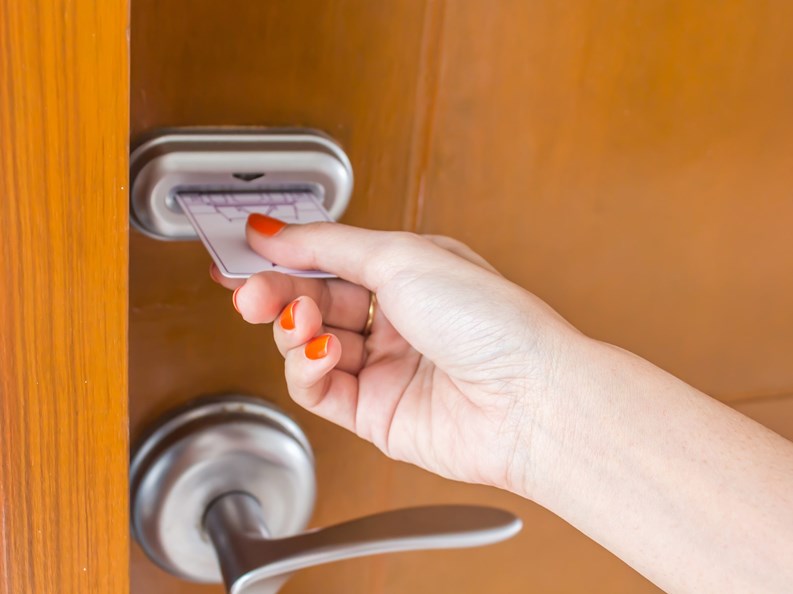It used to be that when you wanted to get into your building or apartment, you would have to pull out your ring of numerous keys and flip through them until you find the one that opens the door. Fumbling through the ring for the right key may seem an endless process and can be made more difficult under inclement weather or in the dark when the light is broken.
Luckily, keyless entry has become a more convenient option. It isn’t just something you hear about in a car commercial anymore, as the idea has been adapted by buildings. At their most basic function, keyless entry merely requires an electronic card with a magnetic strip, or a key fob that is not entirely different from what you would get with a new car--both of which would be easier to pull out of your pocket rather than a key that looks like every other key.
How It Works
“Keyless entry is usually a term for access control,” says Mike Brenner, director of business development at Advance Security & Intercoms in Yonkers, New York. “If you have an intercom system, you can have a separate card reader with access control to get into the building, or you can have it integrated into your intercom.”
Brenner says that you basically carry a key fob, walk up to the intercom, and then you go in as you would with any access control system. These systems can also be used for security purposes by tying it to your elevator system, for example. “You can also limit who has access to the elevator; you can’t use it without a key fob unless someone from an apartment activates it for you from their end.”
In addition, the days of residents making a copy of their key for every random friend are gone, since it’s much harder and more expensive to reproduce a key fob.
If You Really Want to Go High-Tech
It’s not just key fobs and access control cards that are available these days. If you want to have high-end security similar to that of a bank vault, you could always shell out for fingerprint access or retina scanners.
“Something that's available if you want completely keyless entry are biometric options: thumb-print or retinal scanners,” says Joe Cioffi III, vice president of Bergen Protective Systems in Englewood Cliffs, New Jersey. “Now you're getting really intricate and to be honest, cost-wise, it really probably wouldn't be feasible for a multi-tenant building. Also logistically it'd be a problem.”
In addition to being cost-prohibitive, these ultra-secure options take far more effort to set up than it’s really worth it to the building. Cioffi explains that they are really only for higher-risk facilities.
“Then there’s the logistics: everybody that's in the building would have to have their thumb-print put into the system,” he says, “or their eyes scanned. If you wanted an iris scan or something like that, they'd have to have that entered in that data. It'd be hard to give a visitor a key to get in if they had to. So again, the technology's there for that stuff, but it's really not practical for this type of application. But certainly to eliminate keys, proximity-based systems are probably the way to go. They're cost-effective, convenient, and certainly they can even audit who is coming and going if they need to. So there’s a lot of flexibility.”
Whether you want to go with something simple or completely high-tech, keyless options are now available to boards in controlling over who can and cannot enter the property. Thus, residents will have peace of mind knowing that no one’s in the building who isn’t supposed to be there.
John Zurz is a staff writer for The Cooperator and other publications.







Leave a Comment